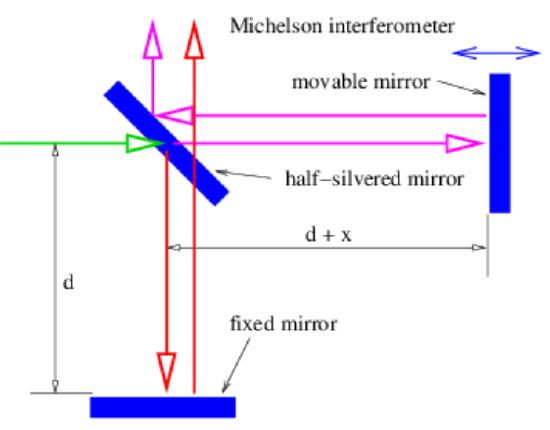1.6: Interferometers
( \newcommand{\kernel}{\mathrm{null}\,}\)
An interferometer is a device which splits a beam of light (or other wave) into two sub-beams, shifts the phase of one sub-beam with respect to the other, and then superimposes the sub-beams so that they interfere constructively or destructively, depending on the magnitude of the phase shift between them. In this section we study the Michelson interferometer and interferometric effects in thin films.
Michelson Interferometer

The American physicist Albert Michelson invented the optical interferometer illustrated in Figure 1.6.13:. The incoming beam is split into two beams by the half-silvered mirror. Each sub-beam reflects off of another mirror which returns it to the half-silvered mirror, where the two sub-beams recombine as shown. One of the reflecting mirrors is movable by a sensitive micrometer device, allowing the path length of the corresponding sub-beam, and hence the phase relationship between the two sub-beams, to be altered. As Figure 1.6.13: shows, the difference in path length between the two sub-beams is 2x because the horizontal sub-beam traverses the path twice. Thus, constructive interference occurs when this path difference is an integral number of wavelengths, i. e.,
2x=mλ,m=0,±1,±2,… (Michelson interferometer)
where λ is the wavelength of the wave and m is an integer. Note that m is the number of wavelengths that fits evenly into the distance 2x.


